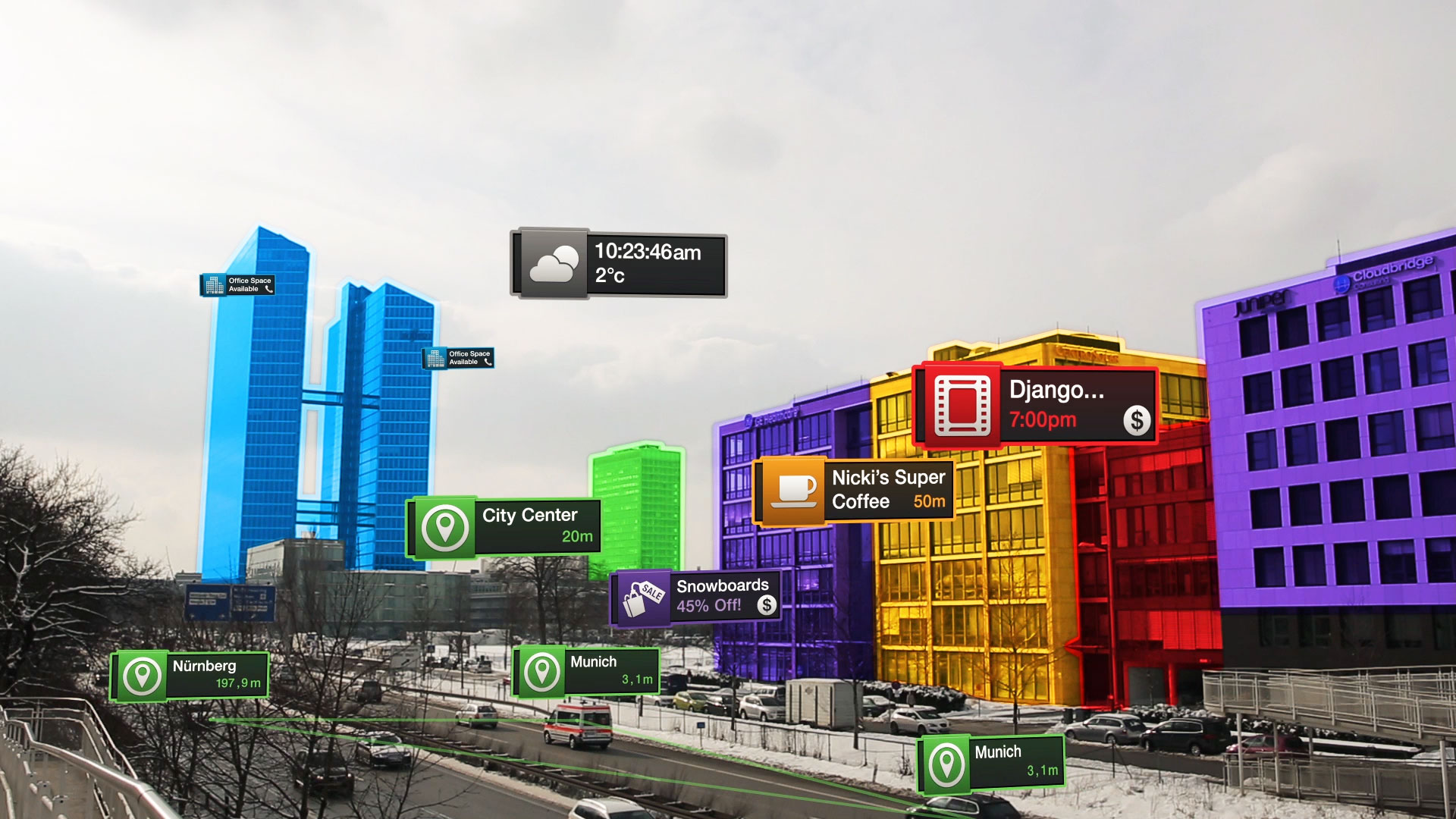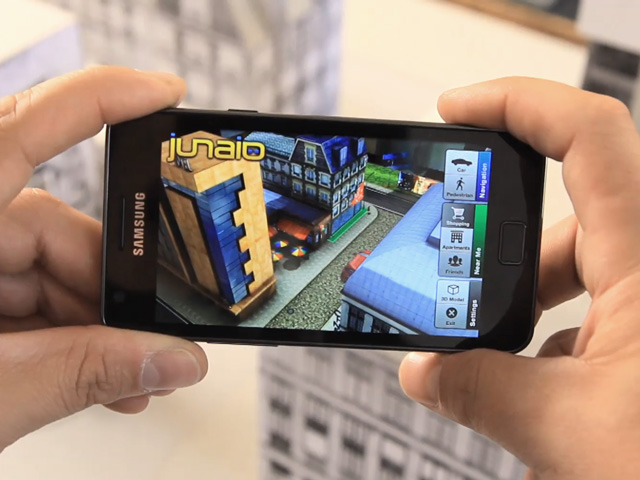Nomination for Auggie Award: Best AR for Enterprise Creator: Trak Lord Organization: Metaio & Mitsubishi Electric =*=*=*= Description: The Mitsubishi Electric MeView AR Enterprise App ->Quality of the Application: Includes elements of creativity and originality specifically applied to augmented reality solutions for the enterprise and industrial applications Mitsubishi Electric found out from independent contractors that potential buyers were opting 70% of the time for ducted HVAC systems rather than the more efficient Mitsbushi Electric wall-mounted units. When contractors asked the buyers why, the most common response was that the buyers didn’t know what the unit would look like in real life. Additionally, product catalogs were cumbersome, costly, and difficult to distribute to ensure the most recent and updated information. Mitsubishi wanted to streamline the delivery of information to their contractors while also solving the problem of providing better visual aids for potential buyers. Mitsubishi Electric was already in the process of developing an enterprise mobile program for their independent contractors, and with the findings of their study they set out to launch a visualization solution utilizing augmented reality to allow potential buyers to see the the HVAC units in real life, in their homes or office. They launched the MeView AR App and added it to the the MeSync enterprise program for over 500 contractors. Mitsubishi Electric then implemented entire 3-D maintenance scenarios and instructions that can be visualized directly onto an existing unit. -> User Experience: Includes design, ease of use, visual appeal, and an innovative AR user experience The user experience of the iPad app is very straightforward- opening up into the camera view, the user (the contractor) can navigate and scroll through different HVAC models. With a large removable self-adhesive picture marker Post-It note custom-made by 3M, the contractor can position the marker to the preference of the buyer. Once the marker is positioned, a detailed 3-D model of the selected HVAC system will appear, to-scale, directly on top of it in the camera view. The tracking has been The contractor can then easily cycle through more than 30 different models for indoor, outdoor, office or home use. There is an inherent screenshot function that allows the contractor to capture an in-app image, which the client can easily share with decision-makers and/or colleagues and family. The contractor can also easily seek more information about the product through the same app. For the 3-D maintenance portion of the application, the use experience is similar. Once the app is launched, the user (contractor / service technician) recognizes the type of unit using Metaio’s object recognition and continuous visual search technology. Once the unit is recognized, the app provides a list of potential maintenance scenarios. Through the camera view, the app highlights individual portions of the system with specific animated instructions. Metaio’s 3-D tracking technology allows the user to move around the HVAC system, providing an interactive and dynamic interface. Once the maintenance step is complete, the user can proceed to the next instruction. Content is lightweight to be understood better by the user while also keeping content production scalable. The 3-D content highlights and “paints” existing components, while adding small symbolic elements such as moving arrow indicators and tools. ->Impact: Includes the potential to impact how people use augmented reality to advance their business and how they work If the only thing that keeps a buyer from purchasing your product is the question, “What is it going to look like?”, Augmented Reality should be your first move. Visualization provides a more intimate and familiar understanding of a product over a 2-D interface like a product catalog or website. There is an undeniable emotional connection that people make when seeing and interacting with something that they can see in front of them, just as if it were there in real life. Additionally, with large product companies (furniture, appliances, HVAC) it’s difficult to bring products to the buyer’s home or office, with some being as tall as 2 meters and weighing considerably more than is convenient to carry. Augmented reality allows businesses like Mitsubishi Electric to put their products in the homes and offices of buyers easily and conveniently. In the case of convenience, this specific solution makes purchasing decisions go quicker, allowing contractors to make more sales visits per month, which in turn allows them to sell more Mitsubishi Electric units per month. Selling a single additional unit per month with this technology creates an additional $30 Million in sales. Mobile visualization apps also greatly reduce the need for extensive product catalogs, reducing printing costs by millions more. Over 500 Contractors are currently using the MeView AR App to visualize these HVAC systems for buyers. The 3- D maintenance is currently available on one unit, with the intention of rolling out the solution to more and more. If you’d like to see the MeViewAR app in action, please visit the Metaio booth at booth 73. In the meantime, please watch the 2 videos we’ve provided below. (http://www.youtube.com/watch?v=iz4ykMn3UR4) (http://www.youtube.com/watch?v=__XFLscwbgM) Thank you for your time! Where to find it: Metaio booth @ AWE 2013, booth 73 Platforms: Mobile Additional Screenshots:...









